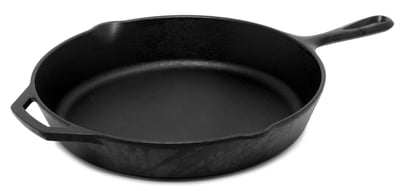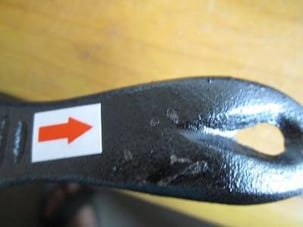 The use of different cast iron cookware pieces have been used for centuries and today we still see a lot of advocates using these types of cooking wares. A lot of people have used or are currently still using cast iron cookware because of its amazing capability to spread heat on an even level without requiring too much heat from the source.
The use of different cast iron cookware pieces have been used for centuries and today we still see a lot of advocates using these types of cooking wares. A lot of people have used or are currently still using cast iron cookware because of its amazing capability to spread heat on an even level without requiring too much heat from the source.
Because of its amazing capabilities whether on a stove top, charcoal, fire place, ovens and other heat sources, the cast iron cookware is considered to be one of the best options for cooking even today! Due to the complexity of cast iron cookware when it comes to cleaning and maintenance, developing a good cast iron cookware from the start is vital to this business.
Here are some of the most used practices for cast iron cookware inspections today:
Visual Inspection
The process that would take place in this inspection process usually involves different tests, analysis and measurements to verify each  piece being distributed out of production are more than ready for inspection. Here are some of the practices being observed during this inspection process:
piece being distributed out of production are more than ready for inspection. Here are some of the practices being observed during this inspection process:
- Inspect each cast iron cookware piece for its intended size, width, storage capacity and build to ensure that each piece is uniform with the rest of the cast iron cookware pieces.
- Inspect the surfaces for any pitting, cracks, rust patches or any corrosion visible during inspection to avoid or minimize defective products prior to distribution.
- Inspect each cast iron cookware piece for noticeable bumps and damages both inside and out the piece.
Microscopic Inspection
Every cast iron cookware piece out there today is made or at least composed of the similar substances to other well-known cast iron cookware. Finding the right inspection process for this procedure is important to ensure that no contamination could be initiated from a factory-released product. Here are a few practices being observed for this inspection process:
- Inspect crevices for any rust patches and unknown (foreign) liquid agents during inspection to ensure the safety and reliability of the cast iron piece being inspected.
- For enamel-coated cast iron cookware pieces (if applicable), inspect if proper coating has been made to ensure that the piece is ready for use after inspection.
- For naturally coated crevices, inspect and identify the different coating layers to be performed to ensure that each process has been meeting the requirements according to the safety standards for cast iron cookware production.
Coating & Seasoning Inspection
Most coating and seasoning inspection process for cast iron cookware pieces undergo different seasoning and coating (for enamel) services prior to final inspection. Here are some of the practices being observed prior to taking the cookware pieces to a different inspection process:

- Inspect and identify each cast iron cookware piece for uneven coating during the seasoning process to ensure that each cast iron cookware has enough coating elements for use after inspection.
- Inspect each cast iron cookware piece for any defects, bumps or chippings especially inside the cookware to ensure a contamination-free product for consumer’s peace of mind.
- Inspect and identify each coating agent to be used on the cast iron cookware to ensure that no poisonous or harmful agent has dripped, or has managed to coat itself during the coating process to avoid lethal concerns in the future.
- Enamel-based cast iron cookware pieces will undergo a series of coating tests to ensure that each piece is hazard-free from busting any small particles during use.
Temperature Inspection
Since it is widely known that the usual operating temperature for cast iron cookware is between low and medium heat on your stove top or oven top, this inspection process will test the overall capabilities of each cast iron cookware piece to ensure reliability and its ability to withstand normal thermal shocks that occur during use. Here are some of the standard practices for this inspection process:
- Each cast iron cookware piece will undergo a series of tests to determine the maximum temperature capacity by using standard heating elements that range between 1,000 and 1,400 degrees Fahrenheit to ensure that each cast iron cookware piece is capable to withstand alarming temperatures.
- Inspect and identify the different heating elements to be used during the test to ensure that each item is within the accepted heating range so that no damages are to be made on the cast iron cookware piece being tested.
Learn more about on-site testing and inspection protocols for cookware by checking out our extended interview podcast!







